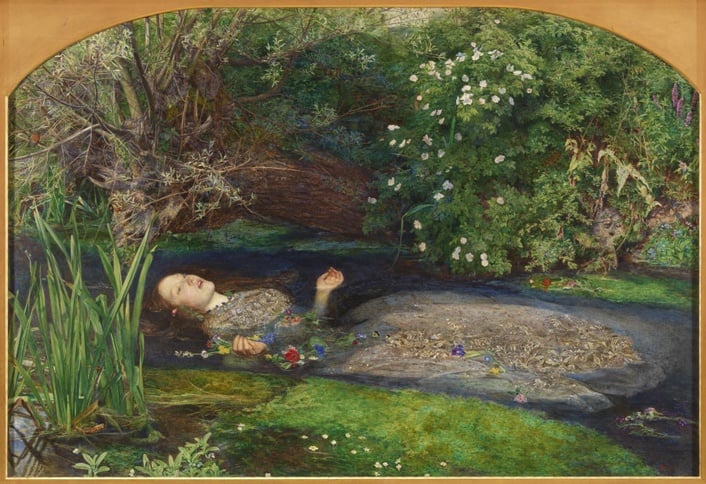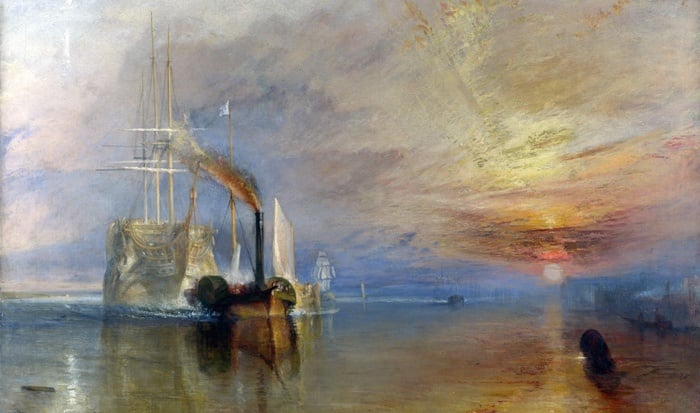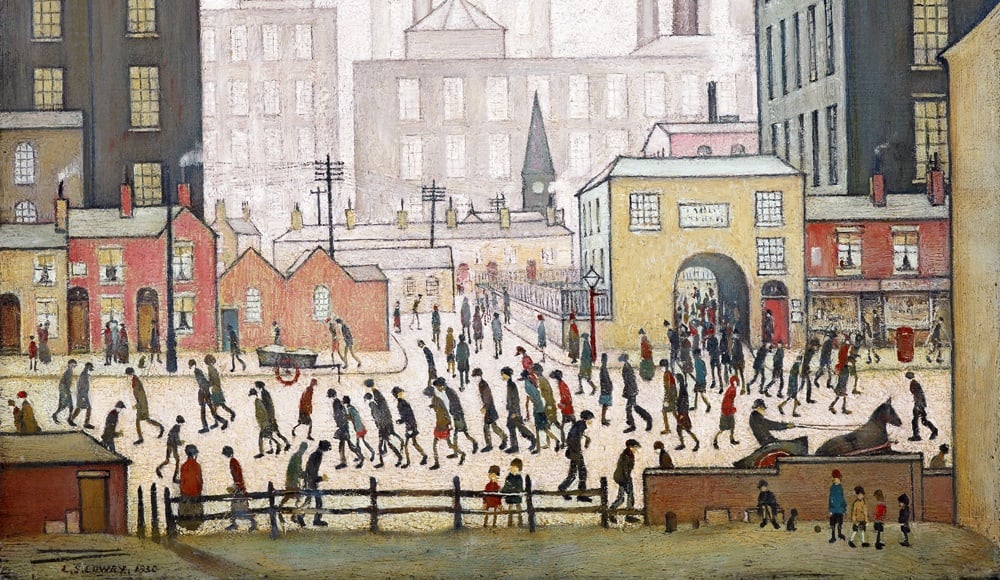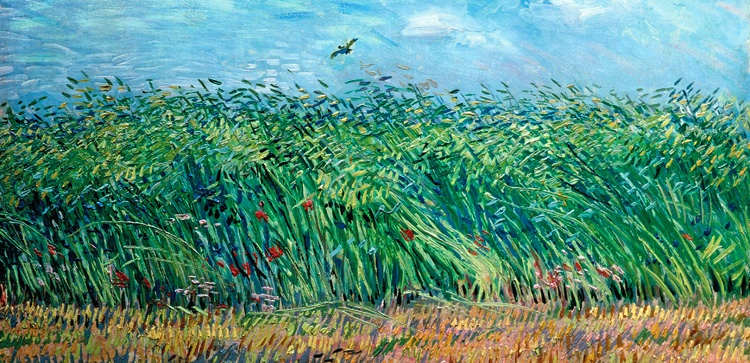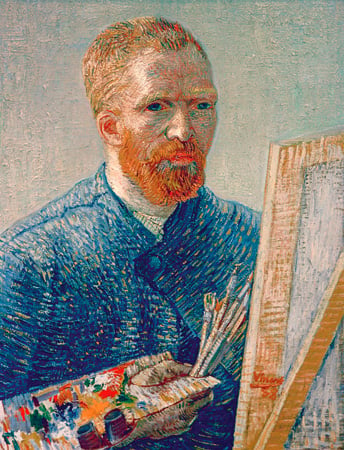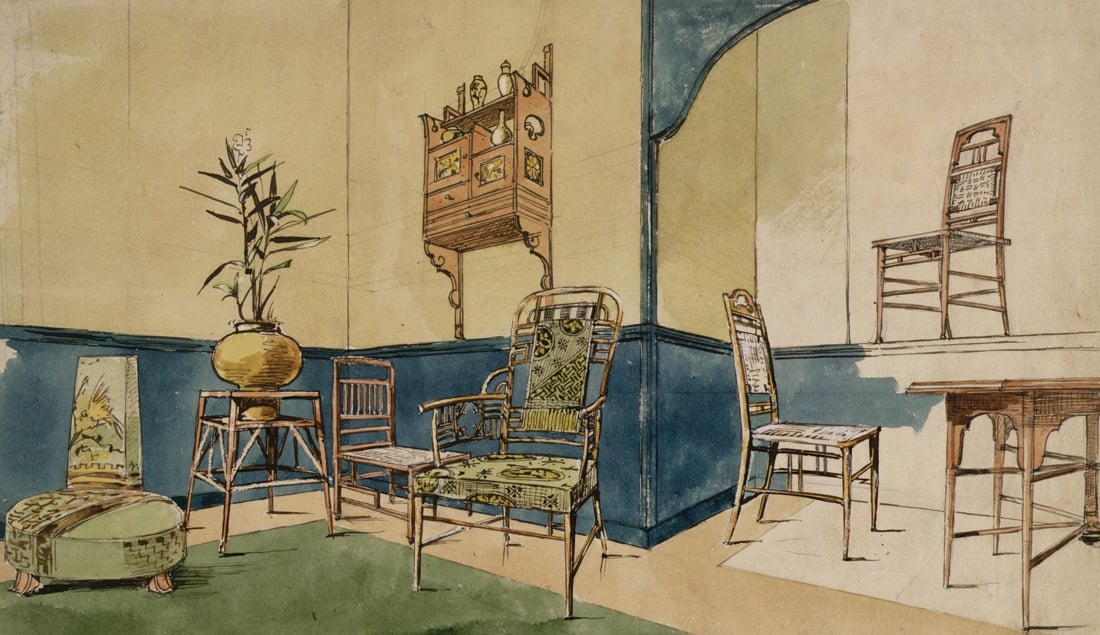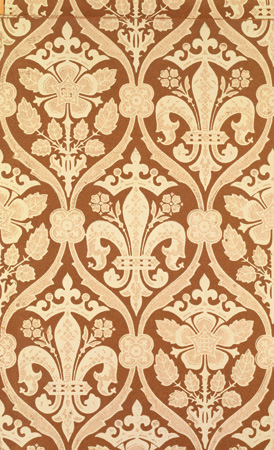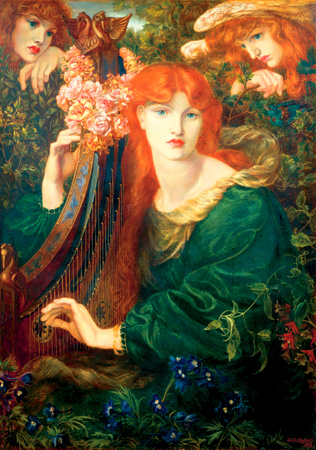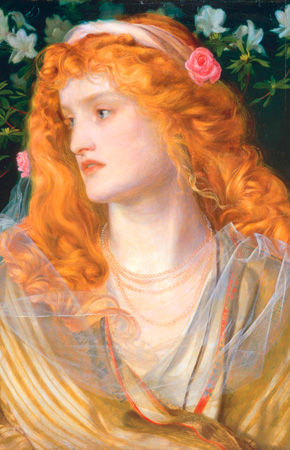Based on the character from Shakespeare’s Hamlet, Ophelia (1851–52) by Sir John Everett Millais (1829–96) exemplifies many of the values upheld by the Pre-Raphaelite Brotherhood. Millais, along with Dante Gabriel Rossetti and William Holman Hunt, formed the group in 1848 and propounded artistic principles that took their influence from the ideas of John Ruskin. The Pre-Raphaelites favoured vivid colour and detail, with a focus on and accurate depiction of nature. This piece, in all its haunting serenity, depicts the moments surrounding Ophelia’s death. The plants, among which Ophelia is shown held afloat, are loaded with symbolism and refer directly to the lines uttered by Queen Gertrude in the play. The Queen announces the news to Ophelia’s brother through an immensely poetic speech (Act 4 Scene vii), which effectively transforms Ophelia’s death into a scene of ethereal beauty. So vivid is the description that it seems already to describe a painting of the tragic event, and it has as such served as inspiration for several artworks, not just by Millais but also by John William Waterhouse, Arthur Hughes and Alexandre Cabanel.
Visual & Decorative Arts Blog
Haunting, wild, evocative: the dramatic landscapes of J.M.W. Turner (1775–1851) and Caspar David Friedrich (1774–1840) convey many of the ideals of Romanticism, an exciting artistic era that emerged out of various reactions to Neoclassicism, the Age of Reason, the French Revolution and the Industrial Revolution. These richly diverse works prioritized imagination and emotion, valuing the sublime and the atmospheric by bringing the response of the artist into play.
Topics: J. M. W. Turner, Masterpieces of Art, Art Movements
L.S. Lowry is beloved by us for making the industrial scene his own. These works were created in his own unique way, poetic yet not sentimental, compelling, even at times disturbing, but never judgmental. In this blog we’ll take a brief look at how he began to develop his well-known style.
Topics: L.S. Lowry, Masterpieces of Art
Vincent van Gogh (1853-90) was an unbelievable artist, who had an incredible relationship with nature. He was able to capture the essence of the flowers, trees, fields and any natural landscape that he was painting, as well as the feelings it evoked in him. The Clark Art Institute in Williamstown, Massachusetts is holding an exhibition on Van Gogh and Nature until the 13th September. In celebration, we are going to explore some of Van Gogh's most impressive natural works.
Topics: Vincent van Gogh, Masterpieces of Art
Summer is in full swing, which means there is plenty of time to fully enjoy the numerous museums and galleries around England. But this July art lovers should draw their attention to one artist in particular: Vincent van Gogh. For reasons bigger than the general appreciation of his incredible artwork, July 29th brings a bigger celebration: the 125th anniversary of Gogh’s death and incredibly memorable career.
Topics: Vincent van Gogh, Masterpieces of Art
Continuing on from our last post, today's article looks at the changes in the Arts and Crafts movement between 1800 right up to the turn of the century. Need to catch up? Click here for part 1.
By the 1880s the enthusiasm for the Gothic Revival as a decorative style was waning but its ethos was very much alive. The notion of hand-crafted products became a point of focus for a more humane society that eschewed factory mass production as a social evil.
Topics: Charles Rennie Mackintosh, Arts and Crafts, Masterpieces of Art
One of the most wide-reaching and influential art movements of the 20th century, the Arts and Crafts movement has had a significant impact on how we perceive design.
Founded in 1880, the movement brought together like-minded creators from around the world. This resulted in a wide array of works within the movement, whilst their individual aesthetics could vary wildly.
Topics: Arts and Crafts, Masterpieces of Art, William Morris
In our last blog we looked at the conception of the Pre-Raphaelite Brotherhood, their artistic missions and subsequent fall from favour. Today we look at how the movement developed after this initial series of rebukes before enjoying a second phase, building upon its prior popularity right up to the modern day.
Topics: Masterpieces of Art, pre-raphaelites
Recently a Pre-Raphaelite study was found, of all places, behind a door! Said door was within a 16th century manor house owned by Bamber Gascoigne, former University Challenge host.
The study's significance stems from its relationship to one of the most iconic Pre-Raphaelite images of all time, Flaming June. Recognised across the world, the original is hosted in the municipal art museum of Puerto Rico’s second biggest city, Ponce.
Topics: Masterpieces of Art, pre-raphaelites
It was European artists who first strove to depict the human body as accurately as possible. However, to achieve figures that were truly lifelike artists had to invest in study of the human body. This meant not only noting the body's outer appearance but also its inner workings, in particular the muscles and tendons that work in tandem to make movement and posture possible.
Topics: Leonardo da Vinci, Michelangelo, Masterpieces of Art

